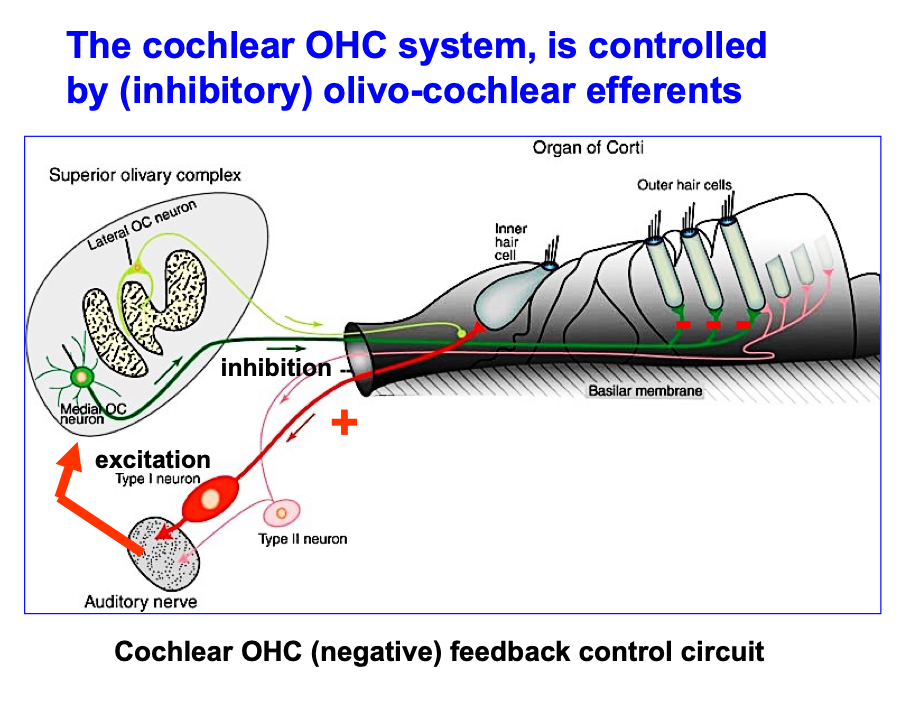Quick Answers
QUESTION:
If fluid vibration in the inner ear is afferently transduced by the inner hair cells, and at some point efferent energy is received by the outer hair cells … and then with an altered fluid mechanical vibration, the signal is AGAIN TRANSDUCED afferently via the inner hair cells… how many of these feedback loops are possible before “running out of energy” and is the phrase “running out of energy” an appropriate metaphor for this?…and if not, why not?
ANSWER:
Before I answer this question, let me briefly describe feedback control mechanisms. Such a control system typically has the following components: [1] an input signal, [2] a process to be controlled, [3] an output, [4] some sensing elements, and (5) a controller device. The diagram below illustrates these elements.
Usually, the sensors will feedback a signal that attenuates the input. This negative feedback will effectively maintain the process such that the final output has a stable level. If the feedback control is positive, the input to the process will increase and the output will be amplified. Ultimately, in an acoustic system, this can lead to a feedback ringing or whistling (as sometimes occurs with hearing aids).
As shown in the figure above, the olivo-cochlear efferents act as a negative feedback control for the OHC cochlear amplifier. Thus we have an mechanical signal input (1) to the system by motion of the basilar membrane. The process to be controlled (2) is the mechanical activity of the OHCs, and the output (3) of the system is from the cochlear amplifier. The sensors (4) are the inner haircells, and the controller device (5) involves activation of cochlear afferent neurons, which in turn (at the level of the superior olive) activate olivocochlear efferents. The action of these efferents is inhibitory on the OHCs, i.e. providing a negative feedback signal on the cochlear amplifier.
So with that background, the answer to the original question posed is as follows:
There is NO positive feedback loop possible because the olivocochlear efferents are essentially inhibitory on the OHC cochlear amplifier. The main neurotransmitter here is acetylcholine (ACh) causing inhibition of outer hair cells. (This may seem somewhat paradoxical given that ACh is most often excitatory, as it is at the neuromuscular junction.) The primary function of this inhibitory efferent system appears to be a classical negative feedback control system that can stabilize the cochlear amplifier. This can keep the system in its optimal operational range, and importantly prevent the out-of-control positive feedback scenario posed in the question.



